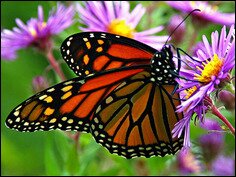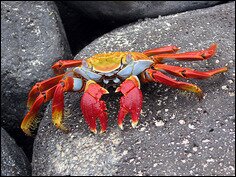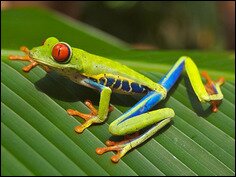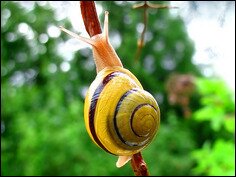What Do Arthropods Eat?
Current Category: Arthropods.
Arthropods make up around 80% of the world’s animals, so it’s a highly successful class. Arthropods are bugs that have jointed legs – the name arthropoda means “jointed feet” – and an exoskeleton (external shell skeleton) to protect their delicate innards.
 Monarch butterfly (Danaus plexippus). Photo by .
Monarch butterfly (Danaus plexippus). Photo by .
Phylum: Arthropoda
Members of the phylum Arthropoda includes some popular subphyla and classes like crustaceans, insects and arachnids. This class of animal ranges from tiny plankton to giant horseshoe crabs that can reach two feet in length. The Japanese Spider Crab is the largest crustacean, reaching lengths up to 4 meters or 13 feet. These creatures live in the ocean or in the sand and are often very beneficial to the environment. They eat a lot of different foods, and are classified as predators, shredders, fungal feeders or herbivores.
Fungal feeders
Fungal feeders, as you might expect, eat fungus and bacteria. They scrape plant surfaces to scrape off fungal growth. These animals tend to be microscopic, although larger examples are the silverfish and the springtail. These animals are helpful to plants because a lot of the nutrients that they need come from helpful bacteria and fungi that live on plant root surfaces. The fungal feeders move around these nutrients and help to distribute them throughout the environment.
 A cicada, platypleura capensis, feeding on the trunk of a birch sapling. Photo by JonRichfield.
A cicada, platypleura capensis, feeding on the trunk of a birch sapling. Photo by JonRichfield.
Most are seen as pests
Some arthropods are seen as pests, but they can also be highly beneficial to the wider environment. The shredders, who eat decomposing or decomposed material, are like the refuse men of the bug world. When they eat the decomposed matter and excrete it, it reloads the soil with rich nutrients. These bugs also help to aggregate the soil and aerate it. The predatory arthropods help to control pests, which helps crops to prosper, so it’s thanks to the voracious appetites of these arthropods that we have healthy crops and animal life.
 A bush cricket eating a fly ().
A bush cricket eating a fly ().
Herbivores eat plant roots
These types of arthropod tend to spend their whole lives underground, in the soil. Cicadas are herbivores, as are root maggots and mole crickets. These animals can easily become pests if they become too numerous. If they become overpopulated, they can wreck crops unless their numbers are reduced by other predatory species, including other bugs. Some herbivorous arthropods, like aphids, expend very little energy in feeding – they pierce the plant stems and the plant’s internal pressure forces the juices into their mouth parts.
 A golden ground beetle eating an earthworm. Photo by Soebe.
A golden ground beetle eating an earthworm. Photo by Soebe.
They help farmers
The predatory arthropods do a really useful service for gardeners and farmers by eating and eliminating the pests that live on flowers and crops. Bugs that eat other bugs either hunt a particular sort of bug or they eat a wider variety of insects. These predatory arthropods include ants, spiders, scorpions, ground beetles and centipedes. Some of the arthropods create and use traps to catch their prey – spider webs are the best-known example of these traps. Other insects and arthropods hunt their prey – either alone like tarantulas or in groups. Some, like the pseudoscorpion, use venom to attack and kill their food.
Some are shredders
Some of the biggest bugs we see, like millipedes, termites and roaches are shredders. Millipedes are among the most abundant types of shredder. These shredders have strong mouth parts that are designed to chew up hard matter. These animals can even make their way through dead tree branches, and turn to tree roots if there’s not enough dead matter to live on.
Read more on popular classes of Arthropods
Insects and crustaceans are examples of classes in the arthropoda phylum. In total, there are more than 10 classes of arthropods.
Continue reading: Arthropod food chain.














